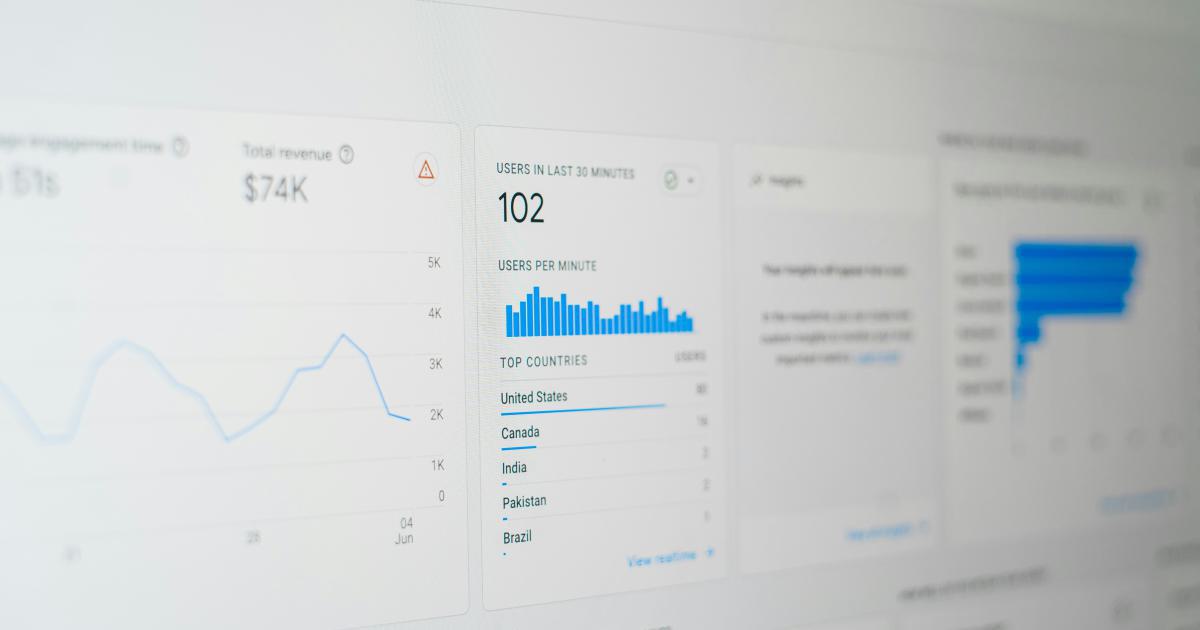6 Actionable Tips for Optimizing Content Readability Scores


Introduction: The Importance of Content Readability
In the vast and ever-evolving digital landscape, the ability to effectively communicate and engage with your audience has become paramount. One crucial aspect of this is content readability - the ease with which your readers can understand and absorb the information you provide. High-quality, readable content not only enhances the user experience but also plays a significant role in search engine optimization (SEO), social sharing, and overall content performance.
As content creators, we must strive to craft pieces that are not only informative and valuable but also easily digestible for our readers. Content readability scores are a powerful tool that can help us achieve this goal, providing quantifiable metrics to assess and optimize the accessibility of our content.
In this comprehensive article, we will explore six actionable tips that can help you elevate your content readability scores and deliver a more engaging and impactful reading experience for your audience.
Understanding Content Readability Scores
Content readability scores are algorithmic measurements that evaluate the complexity and accessibility of written text. These scores are based on various factors, such as sentence length, word length, and the use of complex or specialized vocabulary. By analyzing these elements, readability scores provide a numerical value that indicates how easily a piece of content can be understood by readers.
Some of the most commonly used readability formulas include the Flesch-Kincaid Grade Level, the Gunning Fog Index, and the SMOG Index. These formulas are widely adopted across industries, from educational materials to marketing content, as they offer a data-driven approach to assessing and improving the readability of written communication.
Understanding and optimizing your content's readability scores can have a significant impact on its performance and the overall user experience. By crafting more accessible and engaging content, you can:
Improve SEO: Search engines prioritize content that is easy to read and understand, as this aligns with the user's search intent. Higher readability scores can contribute to better search engine rankings and increased visibility.
Enhance User Engagement: Readers are more likely to engage with and share content that is straightforward and easy to digest. Improved readability can lead to higher dwell times, lower bounce rates, and increased social media shares.
Increase Comprehension: When your audience can quickly and easily grasp the information you provide, they are more likely to retain the key takeaways and act on your message.
Demonstrate Expertise: Presenting complex topics in a clear and accessible manner showcases your authority and expertise, building trust and credibility with your readers.
Now that we understand the significance of content readability scores, let's dive into six actionable tips to help you optimize your content for maximum impact.
Tip 1: Identify and Address Readability Issues
The first step in optimizing your content's readability is to identify and address any existing issues. Begin by analyzing your content using various readability assessment tools, such as the Hemingway App, the Readable.com analyzer, or built-in features in your content management system (CMS) or word processing software.

These tools will provide you with detailed insights into the readability of your content, including:
- Grade Level: The approximate reading level required to understand the text, based on common readability formulas.
- Passive Sentences: The number of sentences written in the passive voice, which can reduce clarity and engagement.
- Difficult Words: The presence of complex or specialized vocabulary that may be challenging for your target audience.
- Sentence Length: The average and maximum length of your sentences, which can impact comprehension.
Once you have identified the primary readability issues in your content, you can take steps to address them. This may involve:
Simplifying Vocabulary: Replace complex or technical terms with more common, easy-to-understand words.
Shortening Sentences: Break down long, convoluted sentences into shorter, more manageable ones.
Minimizing Passive Voice: Rewrite passive sentences in the active voice to improve clarity and engagement.
Enhancing Paragraph Structure: Organize your content into well-structured paragraphs with clear topic sentences and supporting details.
By systematically addressing these readability challenges, you can significantly improve the overall accessibility and impact of your content.
Tip 2: Write for Your Target Audience
Effective content readability is not a one-size-fits-all approach. To optimize your content, you must first have a deep understanding of your target audience and their specific needs, preferences, and reading levels.

Consider the following factors when tailoring your content to your readers:
Demographics: Understand the age, education level, and industry expertise of your target audience. This information can guide your use of language, sentence structure, and the depth of the content.
Familiarity with the Topic: Assess your audience's prior knowledge and familiarity with the subject matter. Adjust the level of detail and explanations accordingly, avoiding overly simplified or highly technical content.
Reading Habits: Analyze how your target audience typically consumes content, whether it's on mobile devices, desktops, or in short bursts. Adapt your writing style and formatting to match their preferences.
Cultural and Linguistic Considerations: If your content targets a diverse, global audience, be mindful of cultural references, idioms, and language nuances that may not translate well across regions.
By tailoring your content to the specific needs and characteristics of your target audience, you can ensure that your message is not only engaging but also easily understood and actionable.
Tip 3: Optimize Your Formatting and Layout
The way you structure and format your content can have a significant impact on its readability. Implement the following best practices to enhance the visual presentation and flow of your content:
Leverage Headings and Subheadings

Organize your content using a clear and logical heading hierarchy, employing the appropriate heading levels (H1, H2, H3, etc.) to create a well-structured outline. This not only aids in navigation but also helps readers quickly identify the key topics and subtopics within your content.
Break Up Content into Manageable Chunks
Avoid lengthy, unbroken blocks of text. Instead, divide your content into shorter paragraphs, each focused on a specific idea or subtopic. This makes the information more visually appealing and easier for readers to digest.
Utilize Bullet Points and Numbered Lists
Leverage bulleted lists and numbered lists to present key information, steps, or ideas in a clear and concise manner. This formatting encourages skimming and improves the overall readability of your content.
Implement Appropriate Spacing and Formatting
Ensure that your content has adequate white space, line spacing, and font size. This creates a clean, uncluttered layout that is easy on the eyes and facilitates a smooth reading experience.
Optimize for Mobile Readability
With the growing prevalence of mobile device usage, it's crucial to optimize your content for seamless readability on smaller screens. This may involve adjusting font sizes, line lengths, and the overall layout to ensure a positive mobile user experience.
By carefully considering the formatting and layout of your content, you can make it more visually appealing, scannable, and ultimately more accessible to your readers.
Tip 4: Incorporate Visual Elements Strategically
Visual elements, such as images, graphics, and videos, can greatly enhance the readability and engagement of your content. When used effectively, these visual aids can clarify complex concepts, break up lengthy text, and make your content more visually appealing.

Here are some guidelines for incorporating visual elements to improve content readability:
Align with the Content: Ensure that the visual elements you include are directly relevant to the topic and help illustrate or support the information presented in the text.
Provide Captions and Alt Text: Always include descriptive captions and alternate (alt) text for your visual elements. This not only enhances accessibility for users with disabilities but also helps search engines better understand the context of your content.
Optimize for Readability: Choose visual elements with clean, legible typography and avoid overcrowding or overwhelming the page with too many visuals. Maintain a balanced image-to-text ratio to maintain a cohesive and readable layout.
Leverage Infographics and Data Visualizations: Infographics and data visualizations can effectively communicate complex information in a concise, visually appealing manner. These elements can help readers quickly grasp key insights and statistics.
Incorporate Multimedia Thoughtfully: Videos, audio clips, and interactive elements can provide a more engaging and immersive reading experience. However, ensure that these media elements complement the written content and do not distract or slow down the user experience.
By strategically incorporating visual elements, you can create a more dynamic and user-friendly content experience that enhances readability and engagement.
Tip 5: Leverage Readability-Focused Writing Techniques
In addition to the structural and formatting considerations, there are specific writing techniques you can employ to further improve the readability of your content. These techniques focus on crafting clear, concise, and engaging prose that resonates with your audience.
Use Plain, Conversational Language
Avoid overly complex or technical language, and instead, adopt a more conversational and approachable writing style. This helps make your content feel more relatable and accessible to your readers.
"Use simple, easy-to-understand words that your audience is likely to recognize and comprehend."
Employ the Inverted Pyramid Structure
The inverted pyramid structure places the most important information at the beginning of the content, followed by supporting details and contextual information. This approach ensures that readers can quickly grasp the key points, even if they skim or scan the content.
Leverage Transitional Phrases
Incorporate transitional phrases and words, such as "in addition," "furthermore," and "for example," to guide readers through the flow of your content and establish clear connections between ideas.
Maintain Consistent Tone and Voice
Ensure that your writing maintains a consistent tone and voice throughout the piece. This contributes to a cohesive and polished reading experience for your audience.
Proofread and Edit Thoroughly
Finally, always proofread and edit your content to identify and address any lingering readability issues, such as grammatical errors, typos, or confusing phrasing.
By applying these readability-focused writing techniques, you can create content that is not only informative but also highly engaging and easy for your audience to understand.
Tip 6: Monitor and Continuously Improve
Optimizing content readability is an ongoing process, and it's essential to continuously monitor and improve your efforts. Regularly assess the performance of your content using readability metrics and user feedback to identify areas for further optimization.

Here are some strategies to help you monitor and continuously improve your content's readability:
Utilize Analytics and Reporting Tools: Leverage the analytics and reporting features available in your content management system, website, or social media platforms to track key performance indicators (KPIs) related to readability, such as:
- Average time on page
- Bounce rate
- Social media shares and engagement
- User comments and feedback
Conduct User Testing and Surveys: Gather direct feedback from your audience by conducting user testing sessions or soliciting survey responses. This can provide valuable insights into how your readers perceive the accessibility and usability of your content.
Benchmark Against Industry Standards: Compare your content's readability scores against industry benchmarks or your competitors' content to identify areas for improvement and ensure you remain competitive.
Continuously Refine and Optimize: Based on the insights gathered from your monitoring and testing efforts, continuously refine and optimize your content to address any readability issues or user pain points.
Implement A/B Testing: Consider running A/B tests to compare different versions of your content, experimenting with various writing techniques, formatting styles, and visual elements to determine the most effective approach for your audience.
By consistently monitoring your content's performance and making data-driven improvements, you can consistently enhance the readability and overall user experience, driving better engagement, retention, and conversion rates.
Conclusion: Unlock the Power of Readable Content
In the ever-evolving digital landscape, the ability to create highly readable and accessible content is a crucial skill for content creators, marketers, and subject matter experts alike. By implementing the six actionable tips outlined in this article, you can optimize your content's readability scores, deliver a superior user experience, and unlock the full potential of your content to engage, inform, and inspire your audience.
Remember, the journey to content readability optimization is an ongoing process, and by continuously monitoring, testing, and refining your approach, you can ensure that your content remains relevant, impactful, and easily digestible for your readers.
As you embark on this journey, consider the following questions to help guide your efforts:
How can you better understand the unique needs and preferences of your target audience to inform your content readability strategy?
What specific writing techniques or formatting changes can you implement to make your content more scannable and engaging?
How can you leverage data and analytics to identify and address readability challenges in your content?
What are the long-term benefits of maintaining a strong focus on content readability, and how can this contribute to the overall success of your content marketing efforts?
By answering these questions and continuously refining your approach, you can position your content for maximum impact, driving increased engagement, improved search visibility, and lasting success in the dynamic digital landscape.
Further Reading
- The Flesch-Kincaid Readability Test: A Comprehensive Guide
- 5 Proven Strategies to Improve Content Readability
- How to Write for Your Audience: 6 Essential Tips
- The Psychology of Typography: How Fonts Impact Readability
- Optimizing Content for Search Engines: The Role of Readability